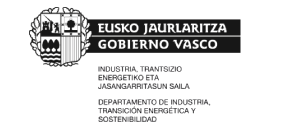I have recently read a couple of interesting articles. The first one was about the challenge of the traditional watch industry. The industry, based primarily in Switzerland, is associated with elegance, quality and luxury, and accounts for more than half of the world’s production. However, since the first smartwatches were launched, it has been seriously affected. In fact, in 2016, Apple sold more watches than any Swiss company, except for Rolex.
The second article referred to the need to move towards eco-responsible watchmaking, where progress is being made in the use of recycled materials. The article mentioned the case of Panatere's production of recycled steel from local waste from watchmaking or medical factories. Advances to develop watches that run on solar cells or that have micro-sensors that can store energy for several years were also cited, as well as the use of plastic materials.
The issue of materials, and especially critical raw materials, has become a key topic as we mentioned in the previous post on the paradox of the energy transition.
According to the European Commission, critical raw materials are those that are of great importance for the EU economy and have a high supply risk according to two parameters: the economic importance and the supply risk.
There is in fact a European list of critical raw materials based on a list of evaluated raw materials, for periods of five years, with no ranking order of raw materials in terms of criticality. The current list of 2023, which is still a proposal, is the result of the evolution over time and the revision of the lists developed in 2011, 2014, 2017 and 2020 (in Spanish).
The current shortage of raw materials is causing growing industrial and security concerns. Moreover, rising commodity prices are jeopardising the recovery of the already weakened economy. The risk associated to pricing, due to changing cyclical patterns of supply and demand developments, has been on the table for the past two years. However, there are other risks, such as environmental risks related to mining and industrial activity.
Furthermore, geopolitical risk increases as does the concentration in just a few suppliers and their country risk increases. There are also other risks such as competition from industrial and defence supplies.
On the other hand, there is the risk associated with the high concentration of supply of certain raw materials in countries with armed conflicts, forced and child labour (Cobalt - Democratic Republic of Congo) or associated with transnational organised crime.
In this context and that of the proposed Regulation for the development of a framework to ensure a secure and sustainable supply of critical raw materials, through which the European Critical Raw Materials Act is materialised, it is essential to adopt measures to ensure the supply of these raw materials necessary for the energy transition and towards decarbonisation, as well as for digitisation. This is the responsibility of companies, as well as of the Institutions, to promote public-private collaboration involving other agents such as those related to knowledge. But this is another matter.
None of the articles mentioned the old, or not so old, automatic watches, which are charged by the movements of the wrist and can reach an autonomy of between 40 and 60 hours, or wind-up watches. Ever since I had one of these watches, I have always thought they were the best choice and I still do, even though they don't allow me to connect to my phone, know my heart rate or have the time adjusted to the atomic clock.
I don't know the impact of these watches versus a digital and smart watch in terms of environmental footprint, but they work perfectly, if they are not used for a while they easily start up again and in their use they are very clean because they do not generate waste such as batteries. Perhaps we should do a study on the subject!

Macarena Larrea
Macarena Larrea, Researcher at Orkestra, holds a Ph.D. in Business Fostering and Development from the University of the Basque Country, she wrote her thesis on the “Internalization of the External Costs of Electricity Production”.













